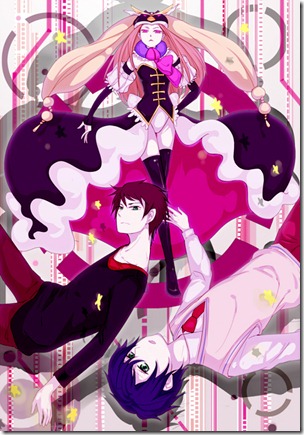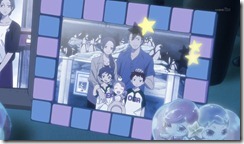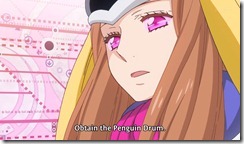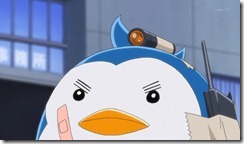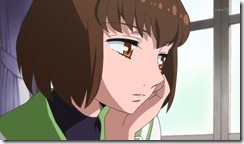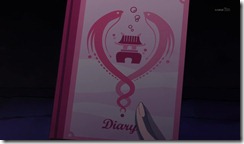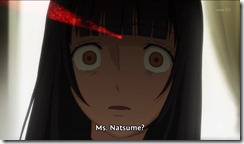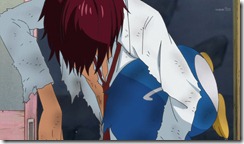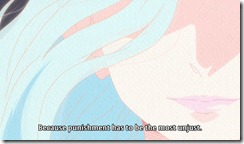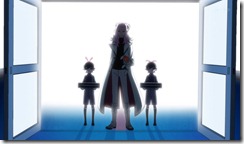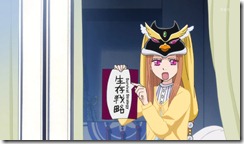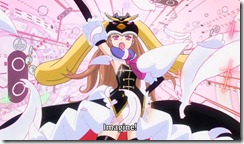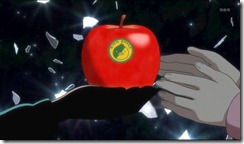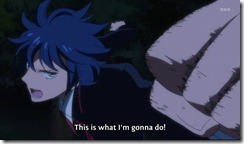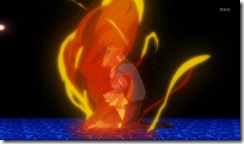Mawaru Penguindrum
Title: Mawaru Penguindrum Genre: Comedy, Drama, Mystery, Psychological Rating: 9.3/10
Summary: The story centers around three siblings, twins Kanba and Shouma, and the ill sister, Himari Takakura. Himari passes away after going out on a trip with her brothers. She was however, miraculously saved by a spirit thriving in a penguin-shaped hat. In return for her extended life, the twins must search for an item known as the Penguin Drum with the aid of three penguins which are visible only to the siblings.
Review: It shames me to say that it took me so long to review this anime considering it started two seasons ago. I’m not sure why I wasn’t more excited to get the review started either because it turned out to be the best anime of the season. Mawaru Penguindrum was a great mix of action, comedy, drama, romance, and strangeness. The series started with a tragic story of two brothers and their sister living alone in a colorful house. They were happy together, very happy actually; their entire lives revolved around one another. However, the youngest, Himari, was suffering from an unknown disease. They worried about her constantly and tried to do anything in their power to make her life comfortable. This initial bond and unity the family felt is what captivated me to watch initially. I’m a huge sucker for tight family bonds, especially between siblings. What kept me watching was the story. The story took a strange twist when an unexpected package showed up at their doorstep containing three penguins. The scariest thing was, only these three could see the penguins. As the series progresses the story started to get more and more intense. It soon leaned toward drama and suspense while earlier episodes focused on the light hearted and comedic side. I found that the series did an exceptional job getting the audience curious, yet not feeding them too much information early on. The art for Mawaru Penguindrum was astonishing. At first it gave off the “romance” vibe. Some of you may find that to be a bit strange considering you’ve either watched the series or not sure how art can appear to be romantic. It is just a common art style that leans towards anime heavily focused on romance, thus been tied to as such in my mind. However, it went far and beyond with great character modeling and comedic facial expressions. One of the best things about Mawaru Penguindrum was the vast number of places it takes you. At one scene you’re in an aquarium, the next you’re looking inside a hospital. More importantly, it never dropped art quality through its comparatively long duration. They planned out a lot of the details and kept a dynamic background. I enjoyed seeing the tiny comedic reliefs they had going on with the penguins as all hell broke loose in the story. The combination of major drama and mild comedy worked extremely well. The art was nearly flawless and they used every utility to their advantage. They did a great mix up of someone’s fantasy compared to reality. However, nothing beats the Survival Strategy transformation scene. Not only did it have amazing background music by Triple H – Rock Over Japan, it was some of the best art I’ve seen. I actually enjoyed watching it over and over again even though it was the same thing every time. Something about the entire setting just filled me with glee. Mawaru Penguindrum didn’t stop there, matched with an equally compelling story the series hit the top of my charts. The storyline for Mawaru Penguindrum wasn’t completely flawless or easy to understand. In fact, I found it quite difficult to follow everything through because there were so many twists and turns. Some episodes brought the audience into the past with very little warning, causing people to piece things together as the story progressed. This matter of confusion and curiosity was exactly why I enjoyed watching the series. It made you think. I was tired of watching the blunt, straightforward anime that had a clear cut beginning and end. I was fascinated and hooked to Mawaru Penguindrum from the get-go. It was fun to watch an episode and go off to discuss exactly what happened and speculate what will happen next with fellow anime viewers. It was one of the only anime that had people guessing because it gave you all the information you needed, but left it so open anything could have been correct. I’ve seen many anime in my time, and this one kept me guessing. My predictions would be semi-correct or completely off. It wasn’t until the very end, and a few discussions later, when I got the anime in its entirety. Even then it was all theory and speculation, which made it even more exciting to remember. When you are brought into the series it was rather clear cut how everyone was related, or so you think. It seems like everyone is focused around individual goals, trying to live their life as they please; little do they know they are all tied together by thin threads of fate. The series’ themes of fate and love had a completely different outlook than many others. It wasn’t the beautiful and sweet tale of an ill-fated family making it out into the green pasture where they could live out their remaining lives peacefully. It was about changing their destiny, taking matters into their own hands. With such an intense atmosphere constantly hovering around the anime came some of the greatest character development. It was an anime that made me enjoy watching every character change for better or for worse. There was not a single character that didn’t play a vital role in the story. More importantly, there was not a single character that didn’t show their true colors over time. It was engaging and enjoyable to watch the characters in a sense grow up over the twenty-four episodes. Kamba was probably my favorite character for his passive to aggressive change over the series’ duration. He turned from a sweet, loving brother to a hardcore, sacrifice-everything-for-something kind of guy. Some may argue that his actions were wrong or misguided. But to that I say, so what? He took a stand and knew what he wanted, sticking to his guns till the bitter end, before anyone else. His brother Shouma was a blip in comparison to the strong presence of his older brother. Finally, and probably the most important feature I found about the story, was it didn’t contain any fillers. It wasn’t an anime that had the “Oh yeah I can skip that episode and still understand what is going on”. Every scene, character, dialogue, and action had a meaning. Even the three little penguins following the siblings around served as an underlying purpose throughout the show. Unfortunately, it was hard to maintain fluidity and flawlessness with such a complicated story. Using many biblical and new age beliefs on top of consistent character twists can lead to a few holes. Overall I wouldn’t say the holes are big enough to discourage anyone from picking this anime up. For those of you who have already watched the series but had a bit of trouble understanding the ending as I did here is a very convenient chart (I did not create this chart, 2chan did! Some believe it is only another theory and not a concrete understanding):[spoiler]
[/spoiler]
The soundtrack was both upbeat and melancholic. It had everything ranging from J-pop to indie. The openings were sung by the same singer for Arakawa Under the Bridge, Etsuko Yakushimaru. I find all of her music to be entrancing because of how different it is from anime (or Japanese music) norm. If you were a fan of her openings like “Venus to Jesus” or “Cosmos vs. Alien” you will definitely need to check her works for Mawaru Penguindrum. The song Nornir specifically stands out for its slow flow melody that constantly changes. At one point I feel like I’m listening to indie, at another a Christmas carol. It’s hard to put the song into words because of how diverse it is within itself. The series also had a cool rock, electric ending called “Dear Future” by Coaltar of the Deepers that I also suggest giving a listen. Coming back to the BGM that I mentioned earlier called “Rock Over Japan”, I would say the series had a solid soundtrack throughout. Two brilliant openings, catchy background music, and a chill ending does the series a solid. The full versions of all these songs are worth listening too.
Final statements: If you still haven’t picked up this anime I need to ask, what is wrong with you? It has been out for quite some time now and I’m sure nearly every anime blog has praised it. It is a must see and I hope that anyone who has it sitting in the back burner of their anime list brings it to the top.